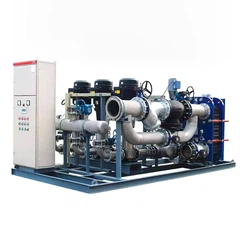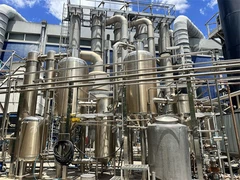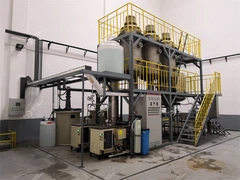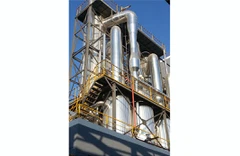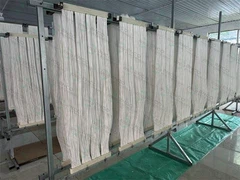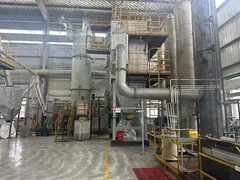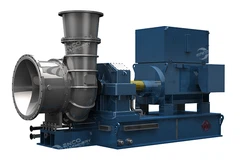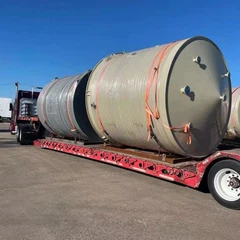Does the Valve Butterfly Valve Offer Unmatched Efficiency in Modern Piping?

Within the domain of industrial flow control, system design often hinges on a balance of performance, space, and cost. The valve butterfly valve emerges as a leading solution, celebrated for its compact design, rapid quarter-turn operation, and exceptional cost-effectiveness, particularly in large-diameter applications. Unlike bulky multi-turn valves, this component utilizes a simple rotating disc to regulate or isolate flow, making it a cornerstone of modern fluid handling systems.
Its widespread adoption across industries-from municipal waterworks to sophisticated chemical processing-is not accidental. It stems from a unique combination of features that solve critical engineering challenges. This exploration will dissect the valve's core functionality, its ideal application scenarios, and the common user pain points that arise in its operation, providing a comprehensive guide for technicians and engineers.
1. What Is the Core Anatomy of a Butterfly Valve?
The elegance of a butterfly valve lies in its minimalist construction. Four primary components work in unison to manage flow with precision and reliability.
- The Body: Typically a wafer, lug, or double-flanged style, the body is the main housing that fits between two pipe flanges. Its slim profile is a key advantage, significantly reducing weight and installation space compared to ball or gate valves.
- The Disc: This is the gatekeeper of the flow. Mounted on the stem, the disc rotates 90 degrees within the flow path. When parallel to the flow, it is fully open; when perpendicular, it is fully closed.
- The Stem: A shaft that passes from the exterior actuator through the valve body and connects to the disc. The stem transmits the rotational force (torque) from the handle or actuator to the disc.
- The Seat: This is the crucial sealing component. In resilient-seated designs, it's a flexible elastomer or polymer ring that lines the valve body. The disc presses against this seat to create a bubble-tight seal. High-performance designs may use metal seats for more demanding applications.
Key Design Variations
Not all butterfly valves are created equal. The design of the disc-stem connection dictates performance:
- Concentric (Zero Offset): The stem is centered in the disc, which is centered in the valve bore. This design relies on the disc deforming the resilient seat to seal, leading to friction and wear over time. It is best for low-pressure, basic applications.
- Double Offset: The stem is offset from both the centerline of the disc and the centerline of the valve bore. This geometry creates a camming action, lifting the disc off the seat as it opens. This reduces friction, lowers operating torque, and significantly extends the seat's service life.
- Triple Offset: A third offset is added to the disc-seat contact axis. This completely eliminates rubbing between the disc and seat during operation. Triple offset valves often feature metal seats and are designed for critical, high-pressure, and high-temperature services, providing zero-leakage performance.

2. In What Scenarios Does a Butterfly Valve Excel?
The versatility of the butterfly valve allows it to be deployed in an exceptionally wide range of services, often where other valve types would be impractical or prohibitively expensive.
Water and Wastewater Management
For municipal water distribution, treatment plants, and pump stations, butterfly valves are the industry standard for large-diameter lines. Their lightweight, cost-effective design for sizes from 4 inches to over 72 inches makes them the only viable choice for many applications.
HVAC and Commercial Buildings
In heating, ventilation, and air conditioning systems, these valves control the flow of hot and chilled water. Their compact size is ideal for the tight mechanical rooms of commercial buildings, and their fast operation is well-suited for automated building management systems.
Chemical and Petrochemical Processing
Here, material selection is critical. Valves with stainless steel bodies, corrosion-resistant alloy discs, and PTFE or PEEK seats can handle aggressive chemicals and solvents. For these demanding applications, high-performance designs from manufacturers like Bray butterfly valves are often specified. Bray butterfly valves are renowned for their robust engineering, advanced seat technology, and specialized configurations that ensure reliability in corrosive and high-purity environments.
Food, Beverage, and Pharmaceutical
Sanitary butterfly valves are designed with polished surfaces and FDA-approved seat materials to prevent contamination and allow for easy cleaning-in-place (CIP) protocols. They are used extensively for isolating and controlling the flow of liquids in hygienic processes.
3. What Common User Pain Points Does This Valve Solve?
Engineers and maintenance teams often select a valve butterfly valve specifically because it resolves persistent issues associated with other valve types.
Pain Point: Prohibitive Cost and Weight in Large Pipe Sizes
- The Problem: Specifying a ball or gate valve for a 12-inch pipe or larger results in an incredibly heavy, bulky, and expensive component that requires heavy lifting equipment and extensive support.
- The Butterfly Valve Solution: A 12-inch butterfly valve can be a fraction of the weight and cost of a comparable ball valve. Its wafer design allows for a much more compact and manageable installation, drastically reducing both capital and installation expenses.
Pain Point: Inadequate Space for Installation and Maintenance
- The Problem: In retrofits or tightly packed industrial skids, there is often not enough physical space to fit a long, flanged gate valve.
- The Butterfly Valve Solution: The face-to-face dimension of a butterfly valve is exceptionally small. This allows it to be installed in tight spaces between existing pipe flanges, making it an ideal choice for system upgrades and modular construction.
Pain Point: Slow Response Time for Process Control or Emergency Shutoff
- The Problem: Multi-turn valves require significant time and effort to cycle from fully open to fully closed, which is unacceptable for automated systems or emergency isolation.
- The Butterfly Valve Solution: The 90-degree rotation allows for extremely fast actuation. When paired with a pneumatic or electric actuator, a butterfly valve can open or close in seconds, providing the rapid response needed for modern process control.

4. What Are the Frequent Operational Challenges?
While highly effective, butterfly valves are not without their limitations and potential failure modes.
Problem: The Valve Is Leaking from the Disc Seal
- Common Cause: This is the most common issue, typically caused by seat wear or damage. Abrasive particles in the media can tear the resilient seat, or chemical incompatibility can cause it to swell or degrade.
- Solution: Ensure the seat material is appropriate for the service. For abrasive media, consider a high-performance double or triple offset valve with a more robust seat design. Regular inspection and replacement of the seat may be required as part of a preventative maintenance program.
Problem: The Valve Is Used for Throttling and Is Experiencing Damage
- Common Cause: Standard concentric butterfly valves are not ideal for throttling. When left in a partially open position, the high-velocity flow can cause the disc to vibrate or "flutter," leading to cavitation and rapid erosion of the disc and seat.
- Solution: If throttling is required, use a valve designed for it, such as a high-performance butterfly valve or a globe valve. Limiting the throttling position to between 30 and 70 degrees open can help minimize damage.
Problem: The Actuator Is Unable to Close the Valve (High Torque)
- Common Cause: In high-pressure applications, the force of the fluid against one side of the large disc can create significant torque, especially as the valve nears the closed position. This is known as hydrodynamic torque.
- Solution: The actuator must be sized correctly to overcome the maximum expected torque. Using a double offset design, which reduces the seating and unseating torque, can help. For very high-pressure services, a geared manual operator or a larger automated actuator may be necessary.
Conclusion: Does the Butterfly Valve's Versatility Secure Its Place?
The valve butterfly valve has firmly established itself as a workhorse in the world of flow control. Its inherent advantages in cost, size, and weight for medium-to-large pipelines are simply unmatched by other valve designs. While it has limitations, particularly in severe throttling or highly abrasive services, these can be effectively mitigated through proper selection of high-performance designs, such as those offered by specialized manufacturers like Bray.
By understanding its fundamental mechanics, ideal applications, and potential challenges, users can confidently deploy this efficient and reliable valve, ensuring optimal performance and longevity in any fluid handling system.


